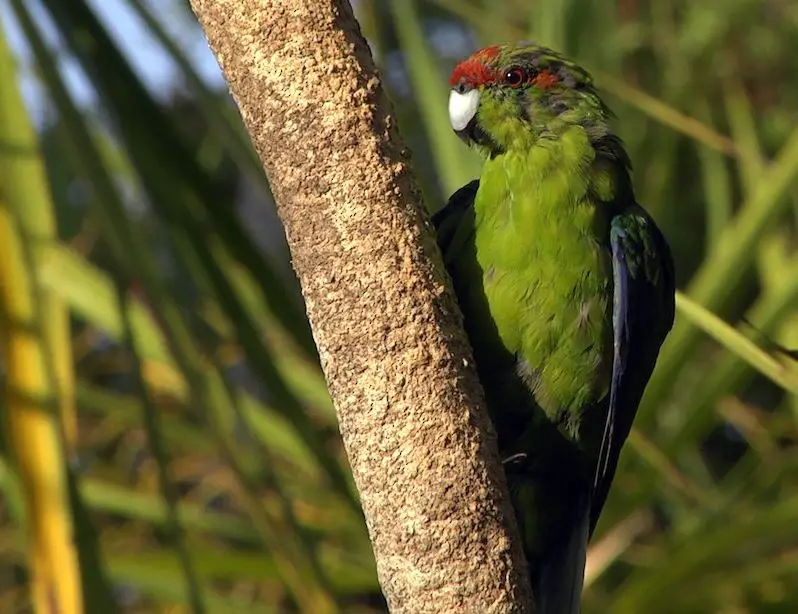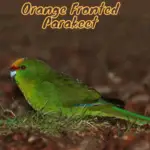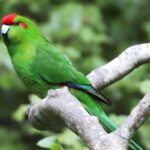
Yellow crowned Parakeet 23 cm. Very similar to C. novaezelandiae but head simply with a red frontal band extending to eyes, backed by a yellow crown
Systematics History
Normally considered to include C. forbesi and C. malherbi as a race and a variant, respectively, but see those species. Has hybridized extensively with C. novaezelandiae in Auckland Is. Monotypic.
Subspecies
Monotypic.
Distribution
New Zealand area: North I, South I, Stewart I (could be extinct on the main island), Auckland Is (possibly eradicated through hybridization), and several small offshore islands.
Habitat
Prefers mixed Nothofagus-Podocarpus forest, usually at higher altitudes than C. novaezelandiae, and, where the two occur together on small islands, prefers taller unbroken forest and scrub, with C. novaezelandiae occupying more open areas and lower vegetation.
Movement
Sedentary.
Diet and Foraging
Yellow crowned Parakeet Seeds including grass seeds, many kinds of berry, shoots, buds, flowers, and invertebrates, on main islands taken in trees, but on predator-free islands often from the ground;
seeds of Pseudopanax, Leptospermum, thistles, and flowers of Senecio, Hymenanthera, Phormium, and Coprosma; seeds of Ixerbia and fruit of Dysoxylum also noted.
Invertebrates are important in the diet, including scale insects Ultracoelostoma assimile, and caterpillars of Heliostibes vibratrix.
Sounds and Vocal Behavior
The commonest Yellow crowned Parakeet call is a long rattling chatter, e.g. “keeke…”, sometimes more nasal and lower-pitched (and thus quite similar to C. forbesi), both in flight and when perched. Also soft conversational calls such as short squeaks and churrs.
SOURCE: Forest & Bird
Breeding
Main period Oct-Dec, but nesting recorded in all months except May and Jun. Yellow crowned Parakeet Nest in hollow limbs or holes in trunks, often dead or decaying stumps. Eggs 5–9.
Conservation Status
Not globally threatened. CITES II. Currently considered Near Threatened. Formerly widespread and common, now confined to larger tracts of remaining native forest, with numbers varying from rare to locally fairly common, but essentially now stable following steady increases since 1950.
However, the felling of native lowland forests for exotic pine plantations continues to pose a threat. Common on Stewart, Auckland, and other islands, where introduced predators, in particular rats, are absent.




















